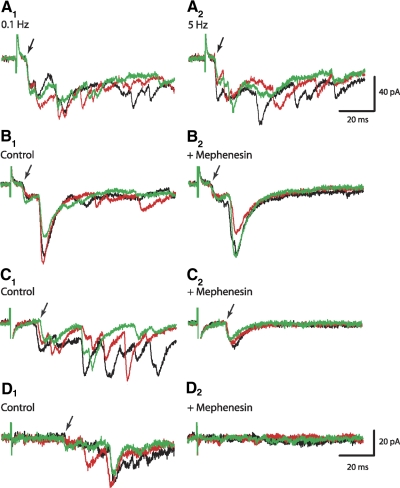Fig. 2.
The onset of the dual-component EPSCs was stable at high-frequency DR stimulation and in the presence of mephenesin. Superimposed are 3 successive EPSCs in the order of black, red, and green traces. A1: dual-component EPSCs with latencies of 6 and 12 ms were generated by L2 DR stimuli at 0.1 Hz. A2: the onset of EPSCs did not change at higher-frequency stimulation (5 Hz). In this and all other panels, arrows point to the first evoked EPSCs. B1: DR-evoked EPSCs in L3 Hb9 IN. B2: exposure to mephenesin (1 mM) did not alter the onset of the dual-component EPSCs, but blocked all EPSCs with latencies >20 ms. C1: L1 DR stimuli at 0.1 Hz generated EPSC with latencies of 14.7 ± 1.2 ms. C2: EPSC onset became more consistent in the presence of mephenesin that blocked EPSCs with latencies >20 ms. D1: extensor-related, L5 DR stimulation evoked longer-latency EPSCs (33.5 ms) in L1 Hb9 IN. D2: L5 DR-evoked EPSCs were suppressed during exposure to mephenesin.

